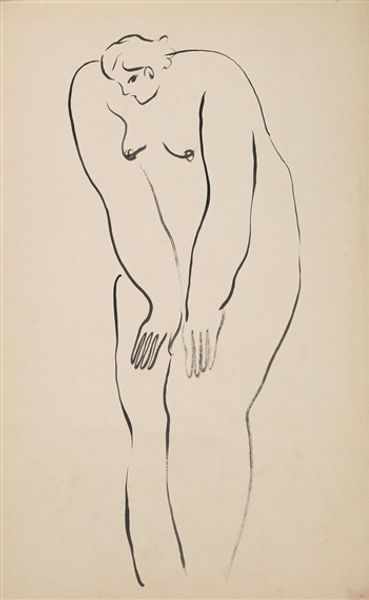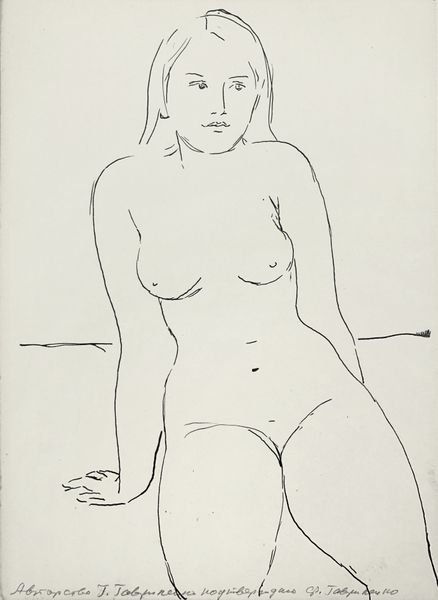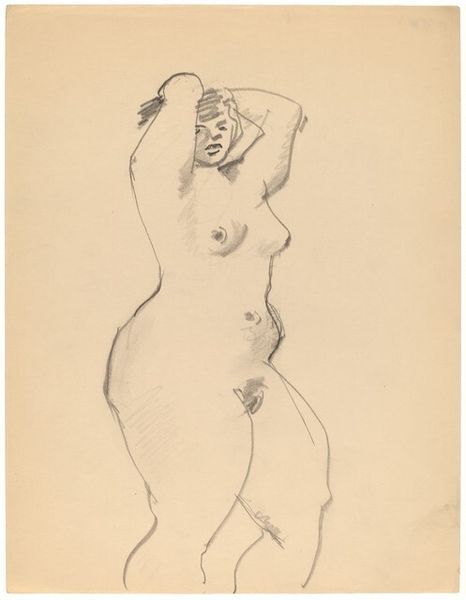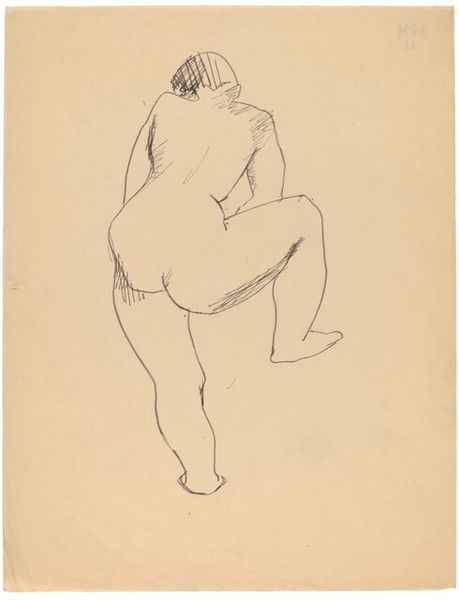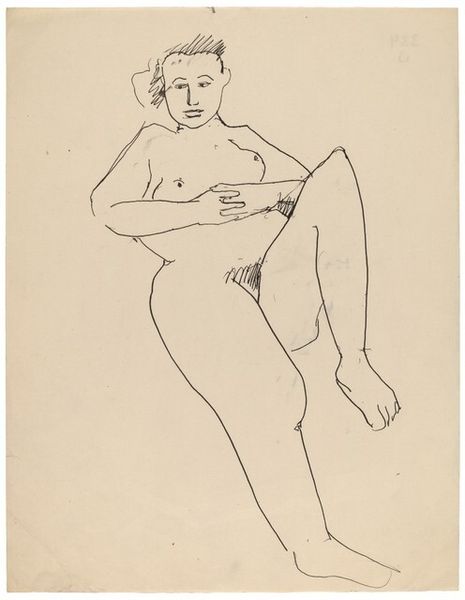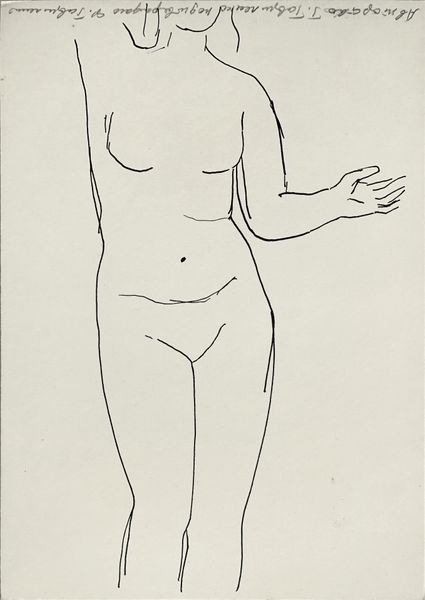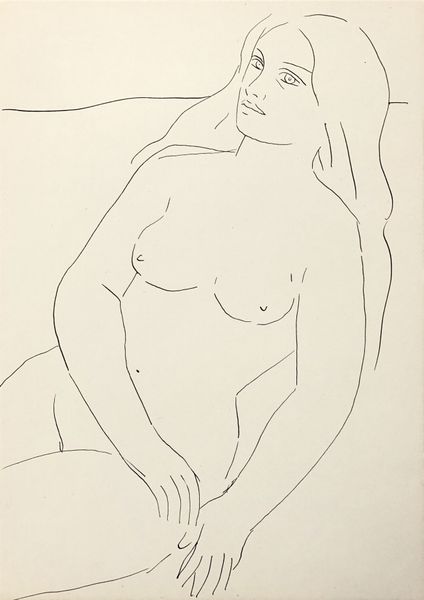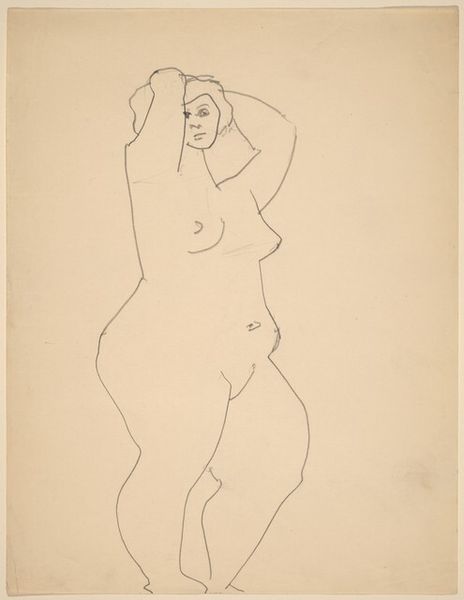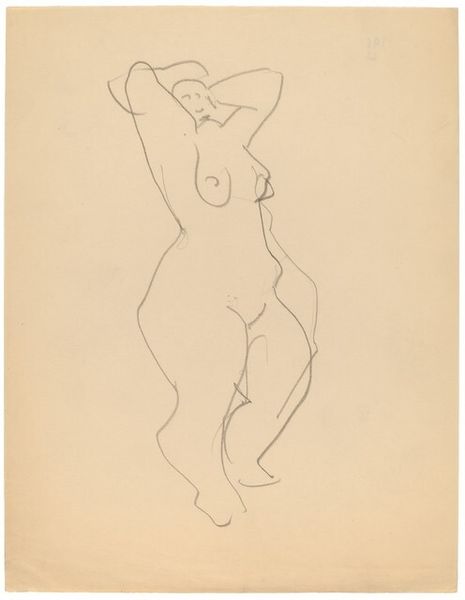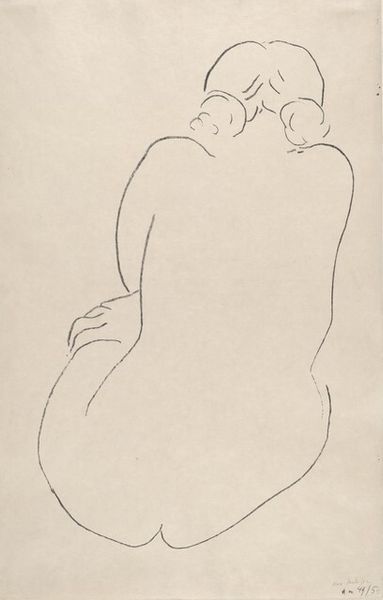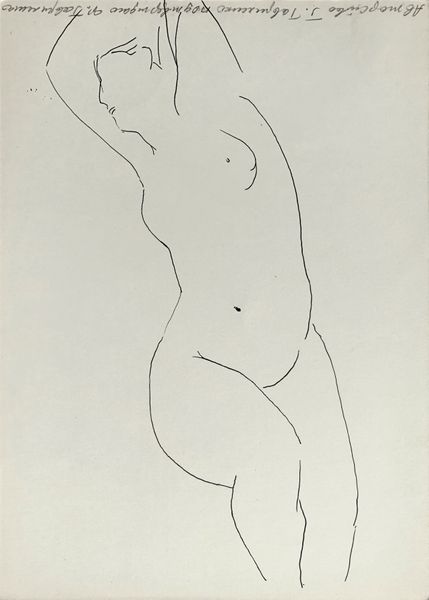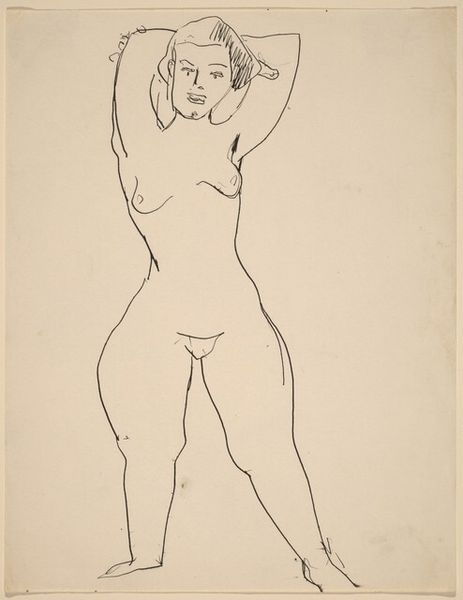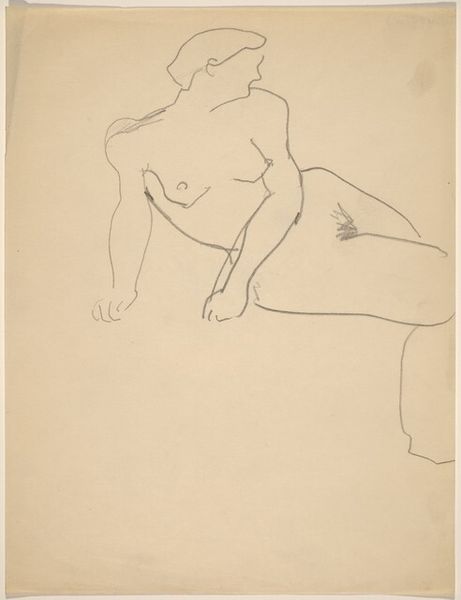
drawing, ink
#
portrait
#
drawing
#
figuration
#
form
#
ink
#
expressionism
#
line
#
nude
#
modernism
Copyright: Public Domain: Artvee
Editor: Here we have Amedeo Modigliani's "Les Nymphes 4," a drawing from 1921 rendered in ink. The economy of line is really striking. What do you see in this piece? Curator: Well, first, I see Modigliani engaging with the classical trope of the nymph, but doing so through a distinctly modernist lens. What does it mean to take a figure traditionally associated with idealized beauty and represent her with such simplified, almost abstracted forms? The long, flowing lines typically associated with the female nude are gone, replaced with something far more stark and elemental. How do you think this rendering affects the viewer's experience? Editor: It feels less romanticized, more human somehow. It’s like he’s stripping away artifice to reveal something essential about the figure. Curator: Exactly! And think about the historical context: this was drawn just after World War I. Consider the profound shifts in societal values and artistic expression that occurred after such massive trauma. The move away from ornamentation towards something more stripped down could be interpreted as a response to a world reeling from loss. How does this piece contribute to a feminist dialogue? Editor: The raw quality does avoid the male gaze so often present in nudes throughout art history. Curator: Precisely. The almost melancholic posture is not overly sexualized, allowing a deeper exploration of the subject's humanity, while still engaging in a long-standing historical debate in the canon. How powerful to reclaim this imagery, wouldn't you agree? Editor: Yes, the piece opens up a lot to consider. Thanks! Curator: The pleasure was all mine. Examining Modigliani's work with this socio-political perspective really enriched my understanding, and hopefully provides deeper insights to all listeners!
Comments
No comments
Be the first to comment and join the conversation on the ultimate creative platform.
